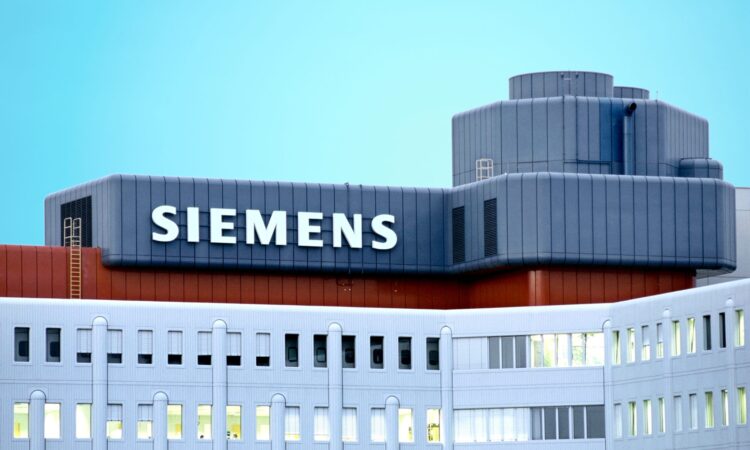
By James Blackman
Siemens has bought French startup Wattsense, a hardware and software company offering a plug-and-play IoT management system for small and mid-size buildings, including schools, offices, warehouses and retail. Meanwhile, it has announced a deal with US cloud security company Zscaler to secure IT/OT crossover between smart factories and corporate/home offices.
The acquisition of Wattsense by the German outfit’s smart infrastructure division expands its building automation products portfolio outside of the large corporate real estate market. Wattsense will remain a standalone business unit within Siemens. Wattsense, started in 2017 and headquartered near Lyon, is focused on making the benefits of a cloud-based IoT management system for buildings, including to reduce energy usage, accessible to a wider range of real estate types.
Its IoT solution combines “simplicity and interoperability”, it claims, enabling adoption of energy management practices in facilities with little in the way of digital technology. The acquisition will help Siemens offer support to businesses in Europe to comply with the Energy Performance of Buildings Directive (EPBD), which requires buildings in the tertiary sector to be equipped with control and automation systems that improve energy efficiency and reduce CO2 emissions.
Wattsense’s IoT solution has been sold in 22 countries. A statement said: “Lowering entry barriers while keeping capital expenditures low, Wattsense allows customers to connect a wide range of devices and make them IoT-enabled. Multi-protocol devices can be onboarded easily before being connected to the cloud and operated in a software as-a-service model.”
Founder and chief executive at Wattsense, Louis Vermorel said: “Wattsense’s commitment to reducing energy consumption and carbon emissions in the building sector aligns perfectly with Siemens’s vision to create technologies that take society further.”
Siemens Smart Infrastructure claims to have more than 2.3 million devices connected to its cloud platform and more than 150 digital applications and offerings in its portfolio. The business division is targeting revenues of €1.5 billion(US$1.74billion) by 2025, from €700 million today.
Chief executive of building products at Siemens Smart Infrastructure, Henning Sandfort said: “We will accelerate the adoption of IoT systems in a wider range of buildings, bringing the sustainability, comfort and cost benefits to more people and businesses. The SaaS business model and innovative technology stack of Wattsense complement our growing digital portfolio for our customers.”
Meanwhile, Siemens said last week it is working with US cloud security company Zscaler to enable customers to securely access operational technology (OT) systems and applications in industrial production sites from the workplace, whether the corporate office or home office. The move, enabling IT/OT crossover and remote access, is relevant to the smart factory market, as opposed to the smart buildings market per se – although there is crossover where corporate offices are served by Siemens both ways.
Siemens and Zscaler have expanded the ‘defense-in-depth’ OT concept secured by a ‘zero trust architecture’, they said, to ensure industrial OT networks are not exposed to any increased threat as a consequence of connecting to corporate IT systems. Based on the principle of ‘least-privilege access’, Zero Trust only authorizes application-specific access based on verified user identity and context.
Industrial networks mainly use a protection concept in which the system is subdivided into separate production cells. Each of these cells is individually protected by appropriate measures, such as a cell protection firewall. In office networks, the zero trust concept is steadily gaining traction, with all participants, users and devices first having to prove their identity and integrity before communication with a target resource can take place.
A statement said: “In combination with the existing OT security mechanisms, such as cell protection firewalls, this allows implementation of a granular access concept. In addition, production requirements for availability and real-time capabilities continue to be met. This is operationalized by installing the app connector for the cloud-based remote access service – Zscaler Private Access (ZPA) – on a Docker container in the Siemens Scalance LPE local processing platform, thus creating an access solution for industrial environments.
“Centralized management in the Zscaler Zero Trust Exchange cloud platform and the use of outbound connections facilitate more restrictive configuration of existing firewall rules, and the reduction of operating costs for administration and monitoring. Existing legacy systems can also be easily retrofitted with the Zero Trust Exchange solution. This offering is now available to customers through Zscaler and Siemens.”
Chief information officer at Siemens, Hanna Hennig said: “Operators of larger corporate networks are faced with the challenge of carrying out production work remotely with uniform security guidelines for OT and IT. By combining our communication technology with Zscaler technology, we can bring IT’s zero-trust approach directly into the OT environment. We have already successfully tested this approach in some of our own plants.”
Deepak Patel, in charge of OT security, in the office of the chief executive at Zscaler, remarked: “Protection of companies can no longer be limited to just IT settings. In times of converging IT and OT infrastructures, organizations must also take the security and access requirements of their production surroundings into account. Siemens and Zscaler are now bringing the benefits of Zero Trust to OT environments, thereby increasing control and protection mechanisms for all technology assets, including in production environments.”







